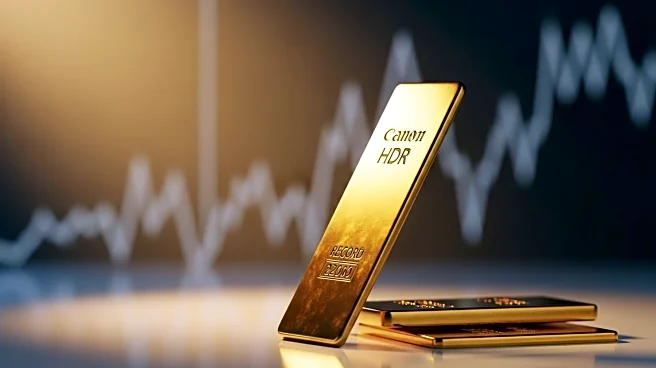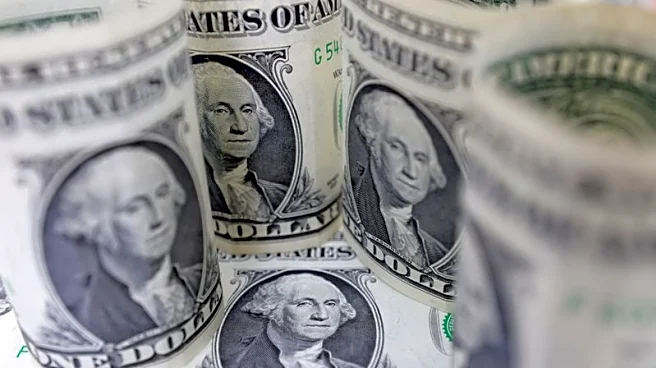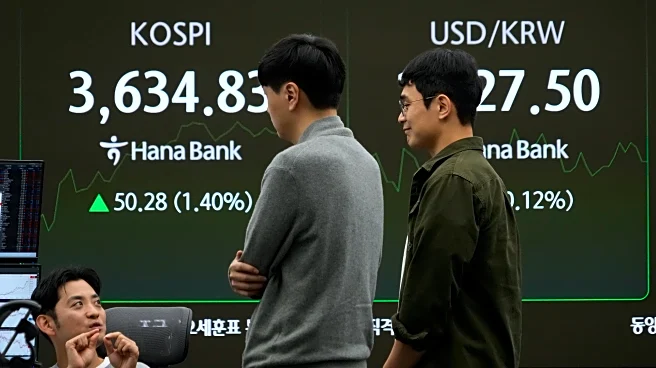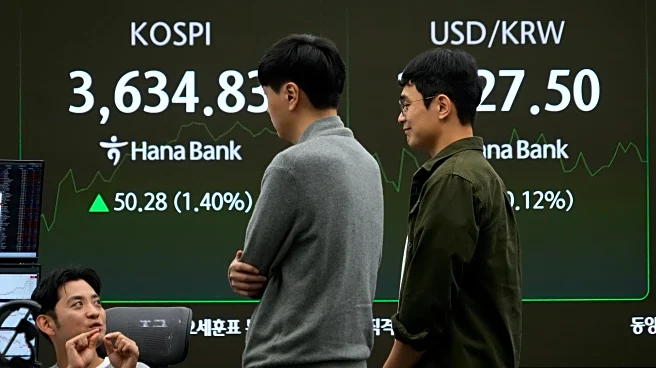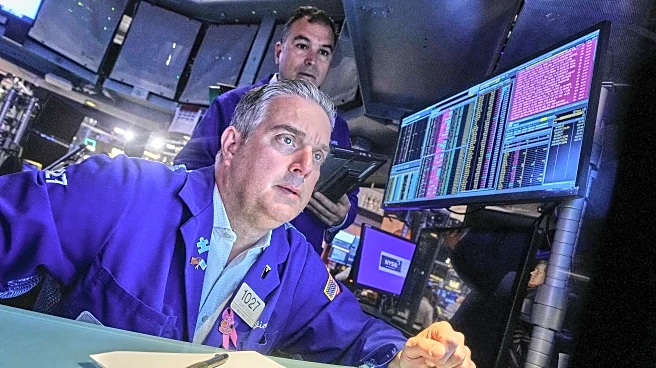What's Happening?
Gold prices have reached a record high, surpassing $4,100 per ounce, driven by expectations of a U.S. Federal Reserve rate cut and heightened trade tensions between the United States and China. Spot gold rose 0.5% to $4,129.16 per ounce, after hitting a record high of $4,179.48 earlier in the session. U.S. gold futures for December delivery also increased by 0.4% to $4,147.10. The surge in gold prices, which have risen 57% this year, is attributed to geopolitical and economic uncertainties, strong central bank buying, and robust exchange-traded fund inflows. President Trump is expected to meet Chinese leader Xi Jinping in South Korea later this month, as trade negotiations intensify. Analysts predict that gold could reach $5,000 per ounce by 2026.
Why It's Important?
The rise in gold prices reflects broader economic and geopolitical uncertainties, impacting investors and financial markets. As a safe-haven asset, gold's appeal increases during times of economic instability, such as the current U.S.-China trade tensions and potential Federal Reserve rate cuts. This trend could influence investment strategies, with stakeholders seeking to hedge against market volatility. The potential meeting between President Trump and Xi Jinping may further affect trade dynamics and economic policies, influencing global markets. Additionally, the increase in gold prices could impact industries reliant on gold, such as jewelry and electronics manufacturing, due to higher material costs.
What's Next?
Investors are closely monitoring the upcoming Federal Reserve meeting for potential rate cut announcements, which could further influence gold prices. The anticipated meeting between President Trump and Xi Jinping may also play a crucial role in shaping future trade relations and economic policies. Market analysts and stakeholders will be watching for any developments that could impact the trajectory of gold prices and broader economic conditions. Additionally, the introduction of port fees by the U.S. and China on ocean shipping firms may affect global trade logistics and costs.
Beyond the Headlines
The surge in gold prices highlights the ongoing impact of geopolitical tensions on global financial markets. It underscores the importance of safe-haven assets in times of uncertainty and the potential shifts in investment strategies. The situation also raises questions about the long-term implications of trade policies and economic decisions on international relations and market stability. As central banks continue to play a significant role in influencing gold prices, their monetary policies will be crucial in determining future market trends.




